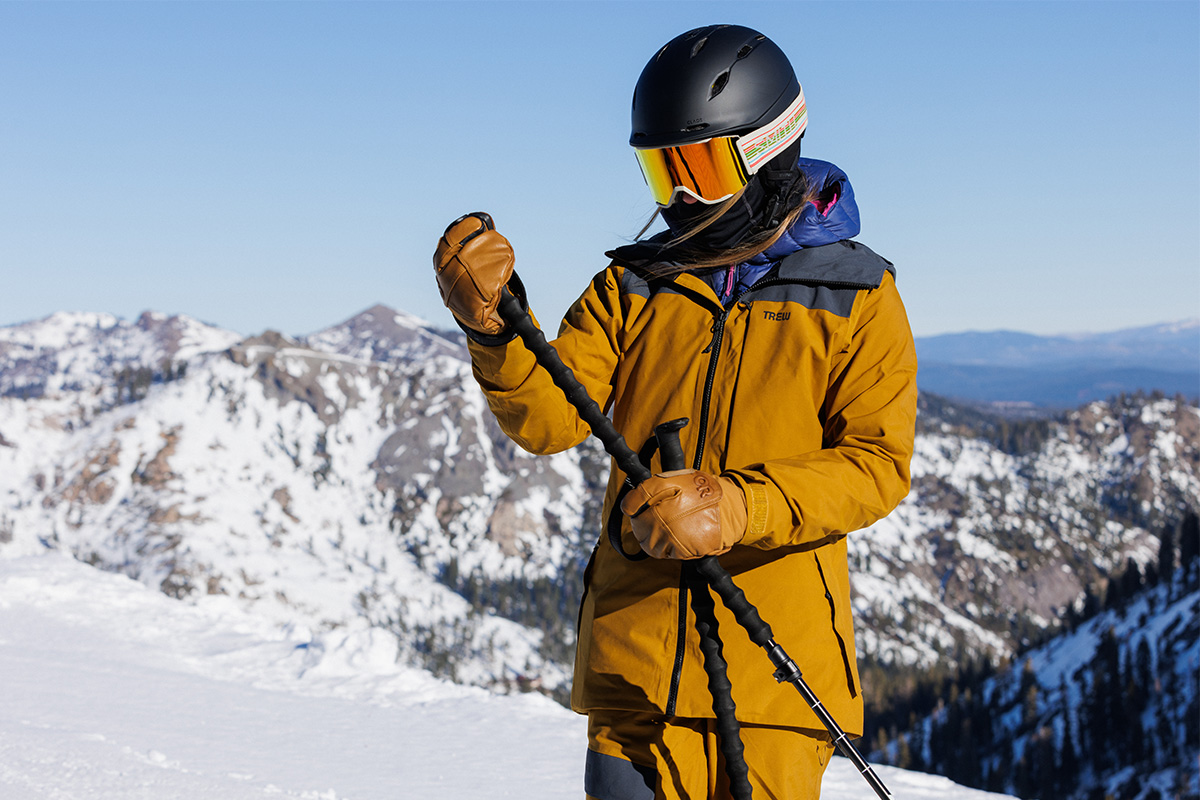
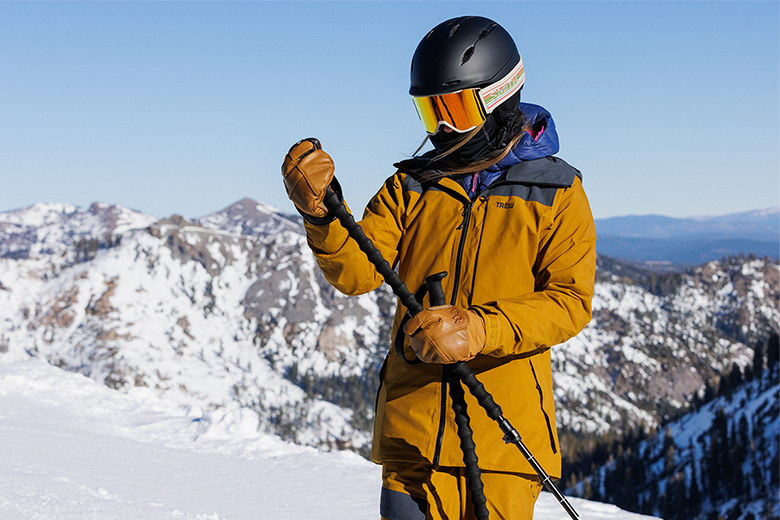
Price: $329
Weight: 1 lb. 12.0 oz. (size medium)
Waterproofing: 2L PNW
What we like: Excellent protection and coverage, built to last, and a solid all-around value.
What we don’t: 2-layer design is bulky and lacking in breathability—this is a decidedly resort-focused piece.
See the Women's Trew Astoria Jacket See the Men's Trew Jefferson Jacket
Oregon-based Trew Gear often strikes a nice balance between performance and style, and their Astoria Jacket is a case in point. This women’s-specific ski shell has been our go-to companion this past winter, accompanying us on over a dozen days at resorts across Colorado and the Lake Tahoe area. In addition to offering excellent coverage, the Astoria stands out for its burly construction, well-executed feature set, and trendy freeride styling. It’s pretty bulky and lacking in breathability due to its 2-layer design, but we consider it an excellent all-around value for the level of quality and durability. Below are our thoughts on the Astoria Jacket. To see how it stacks up to the competition, check out our article on the best women’s ski jackets.
Trew Gear’s Astoria Jacket features a 2-layer construction that utilizes their in-house PNW membrane, which proved to be pretty reliable in testing. It’s been a very warm and dry season in the Lake Tahoe area thus far, so powder days have been few and far between, but the Astoria has deftly shrugged off everything from afternoon flurries to unexpected falls in notorious Sierra cement. The exterior did grow dark and saturated with moisture during an all-day rainstorm, but looking around the chairlift lines, every single jacket had the same drippy appearance. And importantly, despite looking soaked on the outside, the Astoria kept my down midlayer perfectly dry. I’ll report back if any issues crop up once we get some real snow, but given my experiences thus far, I expect the Astoria will fend it off with ease.
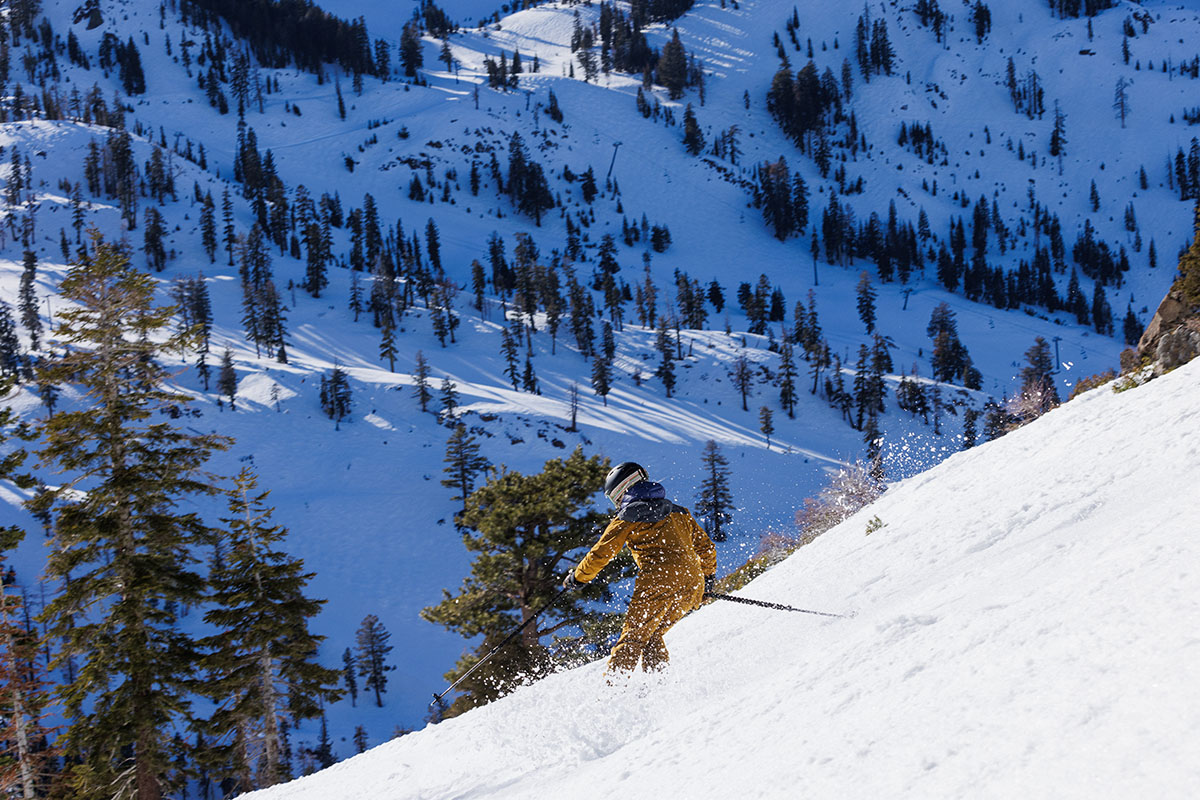
A ski jacket’s feature set can also help immensely with protection, and the Astoria has a great one. For starters, the jacket is fully seam-taped for added assurance, and all of the exposed zippers are highly water-resistant (enough so that I trust them to protect electronics). You also get an adjustable hood that offers excellent coverage and doesn’t restrict movement when worn over a ski helmet, a removable powder skirt for sealing out snow at the waist, flap-protected hand pockets, a drawcord for cinching the hem, and Velcro-equipped cuffs that pair nicely with both undercuff and gauntlet-style gloves. Finally, the jacket has a long cut that extends to about mid-thigh, translating to excellent coverage even when sitting down or bending over (more in “Fit and Sizing” below).
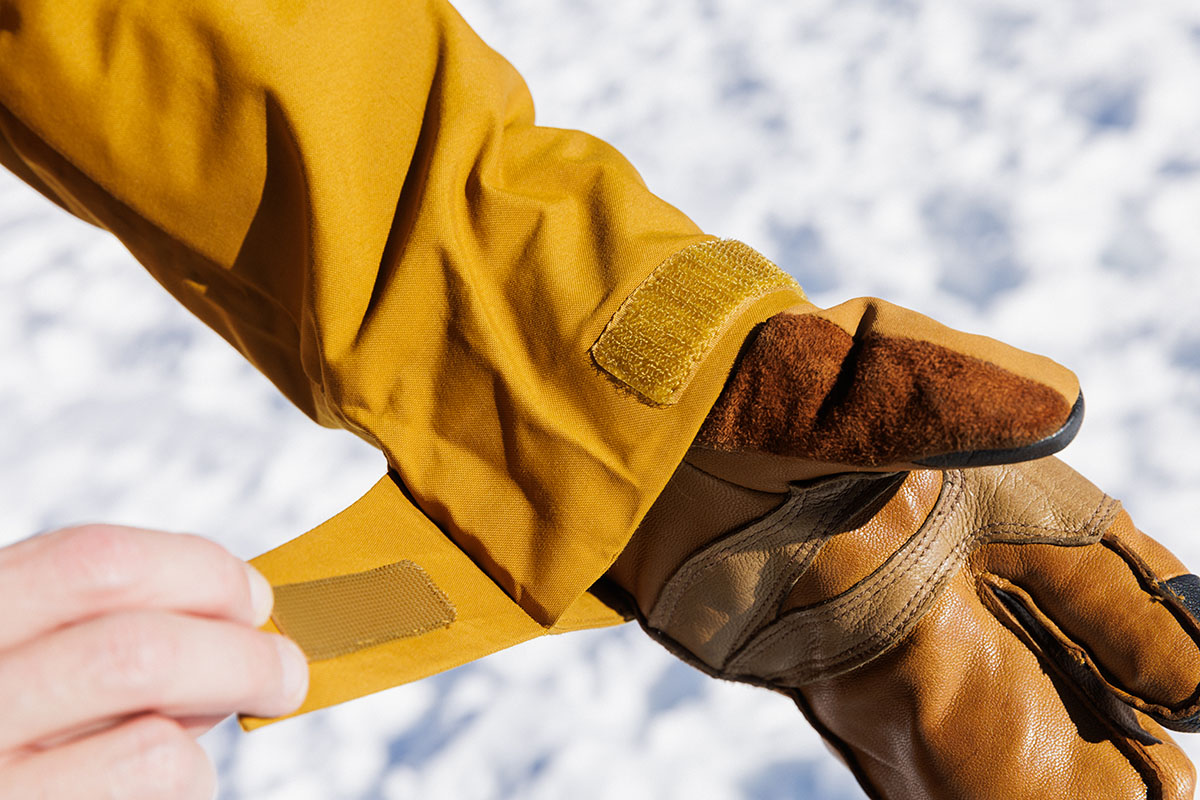
One of the biggest compromises in opting for a 2-layer shell rather than a 3-layer design is reduced breathability, and the Astoria Jacket is no exception. As I mentioned above, it’s been a very mild winter in the Lake Tahoe area, with temperatures consistently reaching into the 40s to 50s Fahrenheit at the base of my local ski resort. Even with the Astoria’s pit zips wide open, I’ve overheated on a few occasions and needed to drop my midlayer entirely. And on quick jaunts into the sidecountry, I’ve needed to fully unzip the jacket in order to stay comfortable—and this is coming from someone who runs very cold. As a result, I don’t recommend the Astoria for particularly rambunctious skiers who tend to build heat or anyone splitting their time between the backcountry and the resort. For that, it’s worth stepping up to a more breathable 3-layer design (for more on the topic, check out our article on Ski Jacket Construction: 2L vs. 3L).
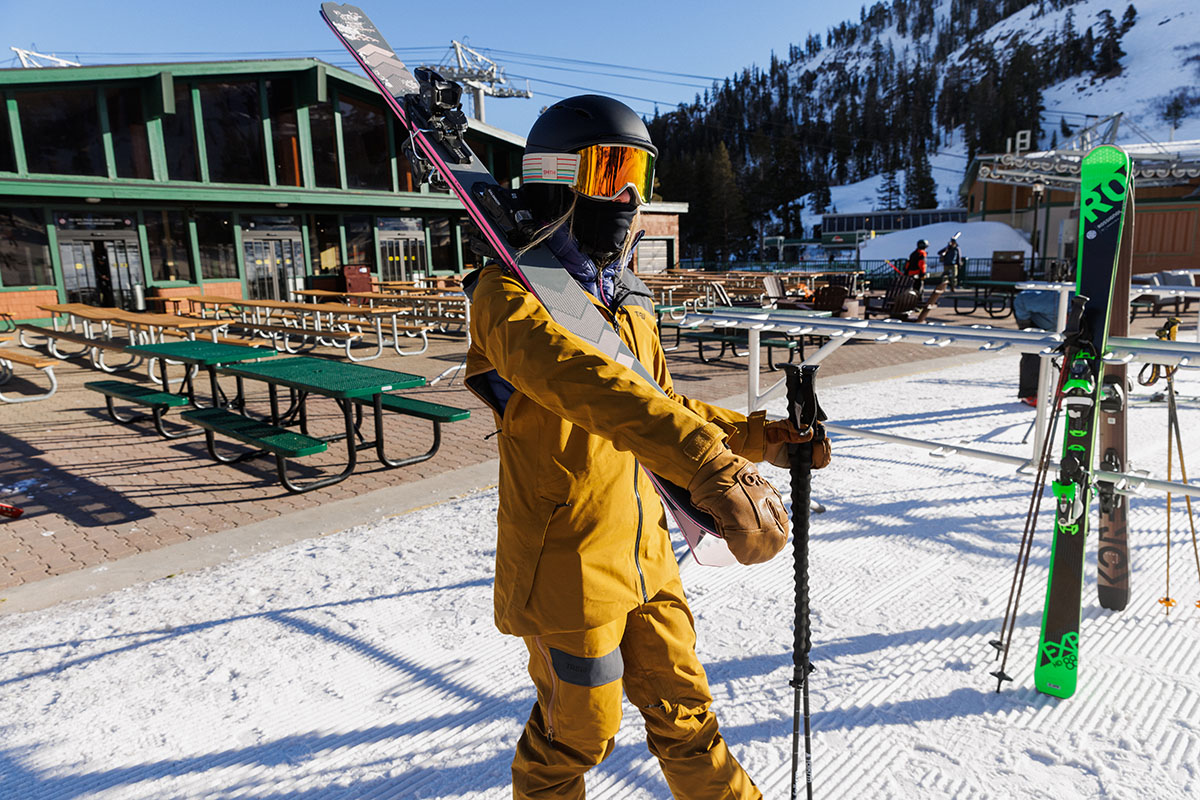
We have yet to be disappointed by the quality of Trew Gear offerings, and the Astoria Jacket is another hardwearing and well-built piece. For starters, Trew opted for a very thick (200D x 320D) nylon shell that has handily withstood over a dozen ski days without issue. While heavy and bulky, the jacket has a very confidence-inspiring feel—I have no qualms about taking it into tight glades or tossing it into the back of my car next to sharp equipment. Most of the smaller details are similarly well executed and continue to operate flawlessly, from the hood and hem drawcords to the Velcro cuff adjustments. I do think a couple features could be improved upon—namely the armpit and hand pocket zippers, which are difficult to operate when wearing gloves (all of them often require two non-gloved hands). But overall, the Astoria strikes me as a very thoughtfully built jacket, especially considering its reasonable price tag.
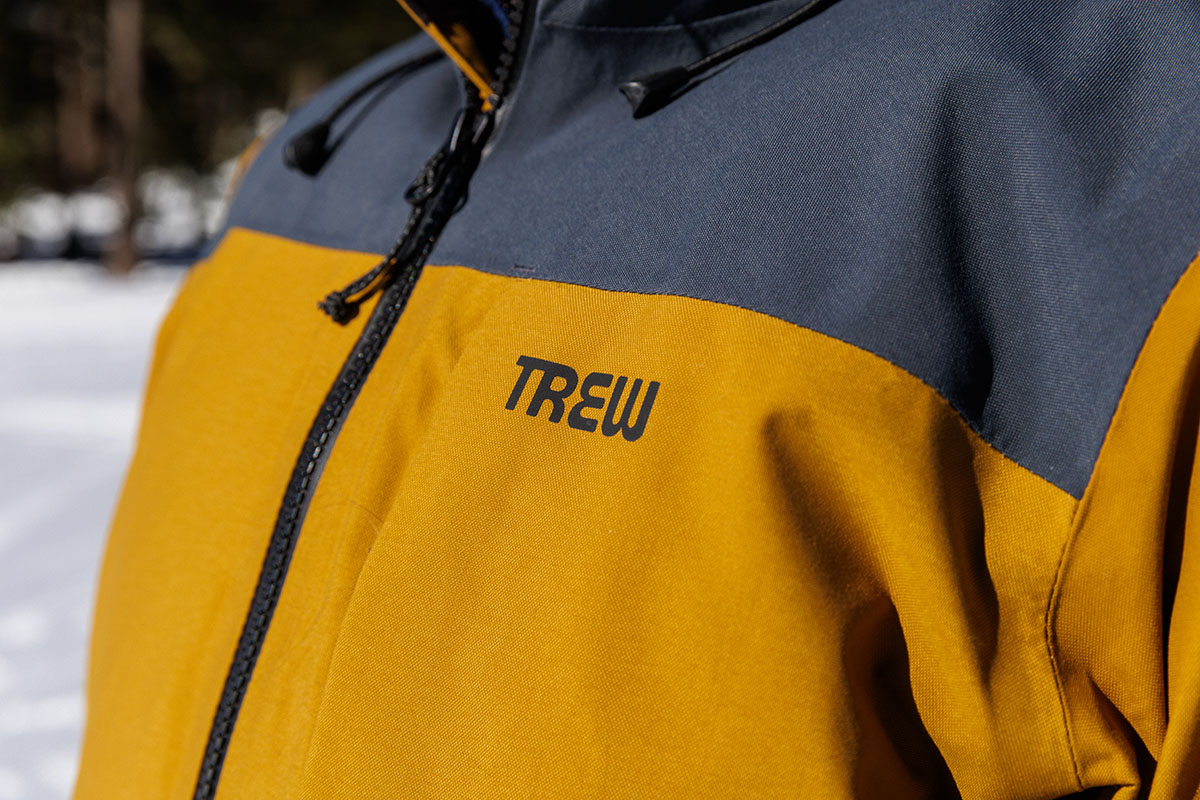
At 1 pound 12 ounces, the Astoria Jacket is one of the heaviest non-insulated shells we’ve ever tested. This is largely a result of the hanging liner, which adds a good deal of heft and bulk. For reference, most 3-layer shells (which have an integrated liner) check in considerably lighter, including options like Arc’teryx’s top-shelf Sentinel Jacket (1 lb. 5.3 oz.) and Flylow Gear’s Lucy Jacket (1 lb. 5.6 oz.). For a closer comparison, 2-layer alternatives like the Patagonia Storm Shift (1 lb. 9.5 oz.) and REI Co-op First Chair GTX (1 lb. 8 oz.) line up more closely with the Astoria but still undercut it by a few ounces. To be fair, the Astoria has never felt excessively heavy on the slopes—even when the exterior became saturated in an extended rainstorm—but the heft is certainly noticeable when peeling it off and tossing it in my car or hanging it on a hook to dry. On a related note, packed size is very large, even with the jacket rolled into its hood. In other words, riders who like to earn their turns in the backcountry (even just occasionally) should look elsewhere.
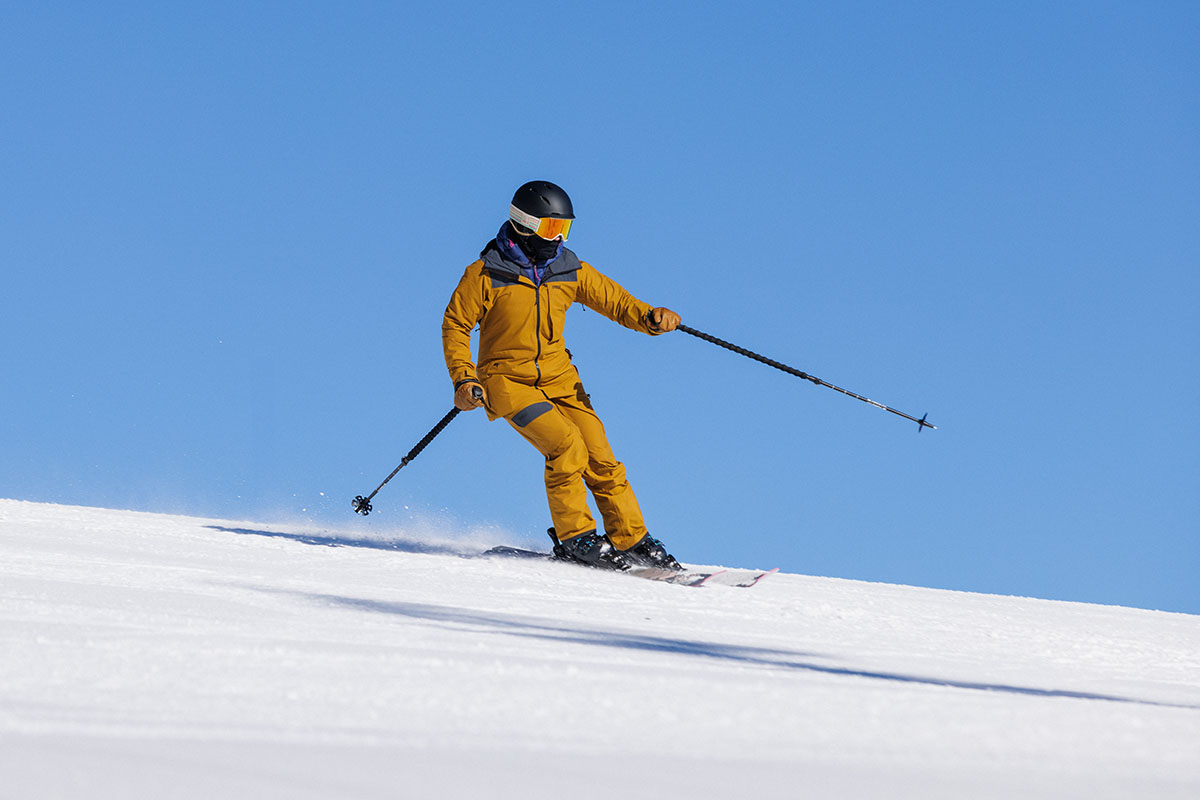
We appreciate when ski jackets feature large, helmet-friendly hoods that don’t obstruct vision or impede movement, and the Astoria checks those boxes. For reference, the hood paired well with both my Smith Mission and Glade Boundary MIPS helmets, leaving just my nose and goggles exposed with the jacket fully zipped. In terms of adjustability, there are two drawcords at the base of the collar and one at the back of the head. All are large and glove-friendly and work together to provide an even, secure fit. All in all, it’s a very functional design that has given me no issues throughout the season.
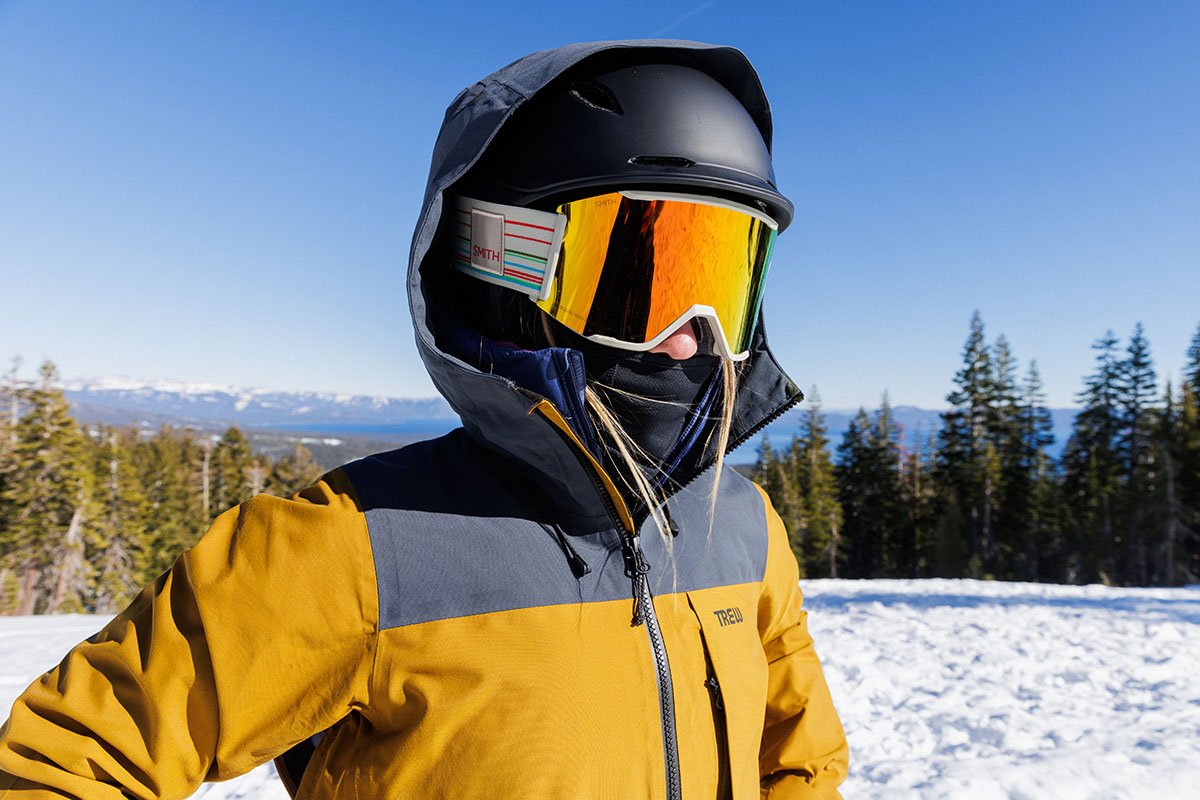
As far as storage goes, the Astoria Jacket comes well equipped for inbounds use with five total pockets. Starting at the outside, you get a single zippered chest pocket that’s large enough to swallow a smartphone, along with two zippered hand pockets protected by fabric flaps for added assurance against moisture. It’s worth noting that the angle of the hand pockets makes them difficult to access (opening and closing often requires two hands), but the advantage is that items stay secure throughout the day. In fact, I accidentally left one of the pockets unzipped with my watch inside on my first day of the season and was relieved to discover that it hadn’t fallen out after over a dozen runs. There’s also a small zippered pocket above the left wrist for storing a ski pass, ID, or credit card, along with a single internal mesh drop-in pocket for stashing gloves or a beanie. None of the zipper pulls are large enough to operate when wearing bulky ski gloves, but bigger pulls would result in added bulk, and it hasn't been a huge annoyance in testing.
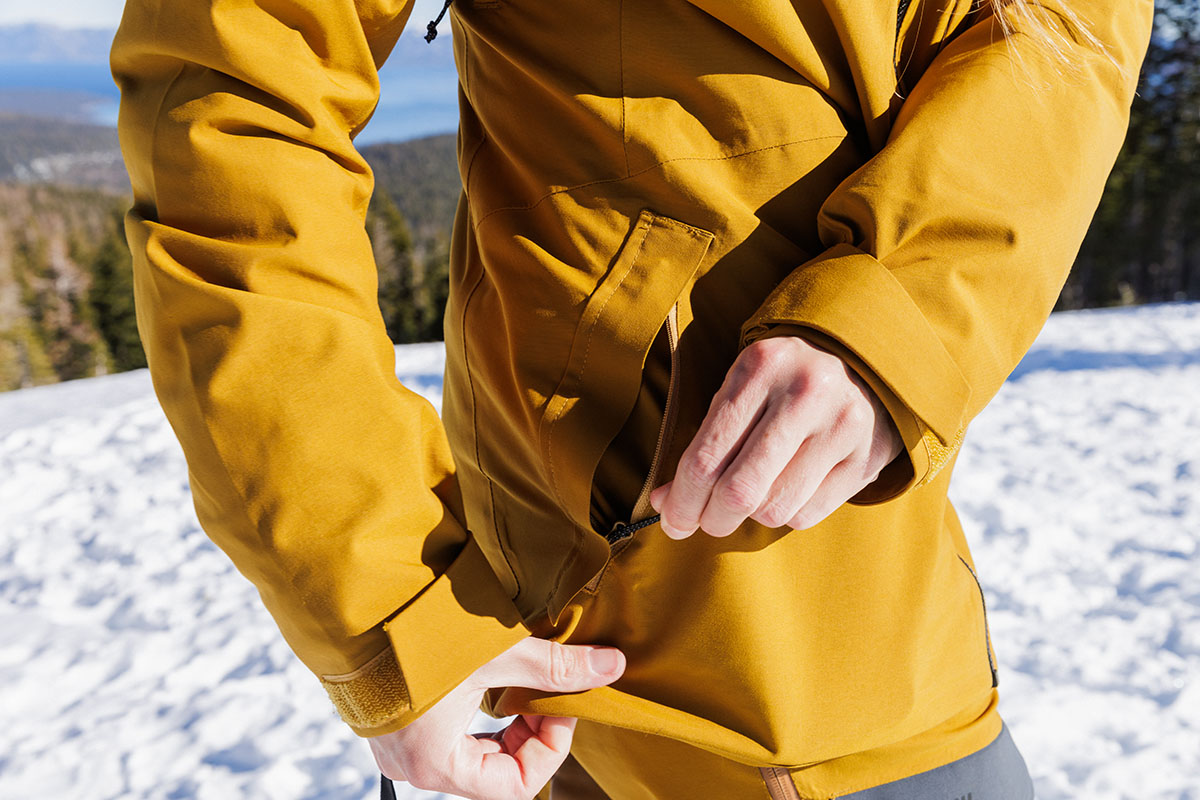
Like most modern ski jackets, the Astoria has a powder skirt that’s designed to keep moisture out when skiing deep snow or in the event of a fall. The design is fairly standard: The skirt features grippy elastic around the perimeter to keep it in place, with snaps at the front to secure it shut. Unlike many competitors, the Astoria's skirt can’t be attached to compatible ski pants, but I do love that it’s easily removable via an internal zipper. To be sure, a powder skirt isn’t a requisite feature for many riders (ski bibs can accomplish the same goal), but it’s nevertheless a great extra line of defense on powder days.
The Astoria Jacket has a relaxed, freeride-inspired fit that makes it easy to layer underneath. For reference, I’m 5’6” and weigh around 135 pounds, and my standard size small was just about ideal. As I mentioned above, the jacket has a noticeably long cut (30.5 in. for a small) that offers excellent coverage, extending to about mid-thigh. This does result in some restriction to movement when bending over to adjust my ski boots, but unzipping the main zipper is a pretty quick solution, and I’ve appreciated the extra coverage when sitting on cold, wet chairlifts. The sleeves are also spot-on for me, extending just past my wrists. My go-to layering system this season has been a lightweight wool baselayer and a down midlayer (Patagonia’s Down Sweater), and the Astoria accommodates them perfectly.
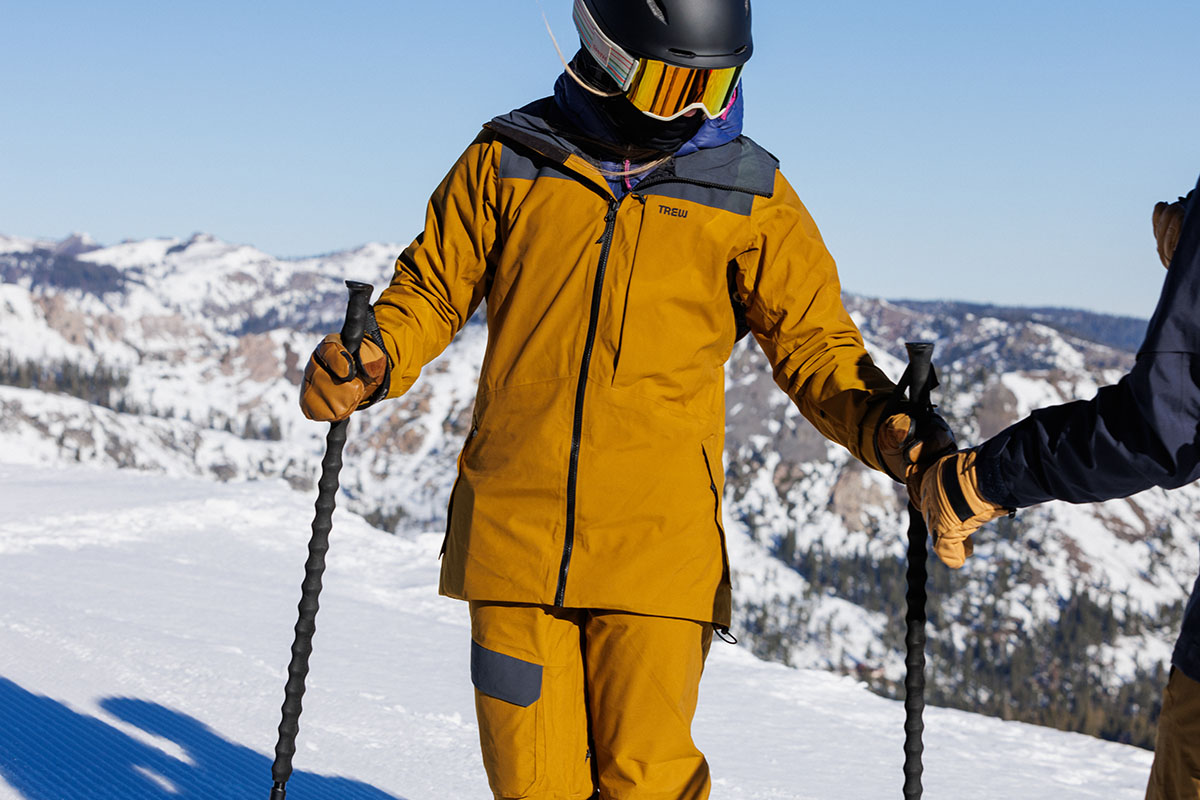
I tested the Astoria Jacket for this review, and the collection also includes matching bibs that I’ve been wearing with the jacket all season. Like the jacket, the Astoria Bib retails for $329, comes in six sizes (from XS to XXL), and features the same burly, 2-layer PNW construction. As far as downsides go, the bibs are hefty and bulky like the jacket, but I’ve enjoyed the generous storage layout, excellent coverage, and relaxed fit. On the men’s side, the Jefferson Jacket is largely identical to the Astoria but has a different cut, weighs slightly more, and omits flaps over the hand pockets. It’s also sold in a matching bib that lines up closely with the Astoria Bib but with some tweaks to the storage layout (including vertical rather than horizontal chest pockets).
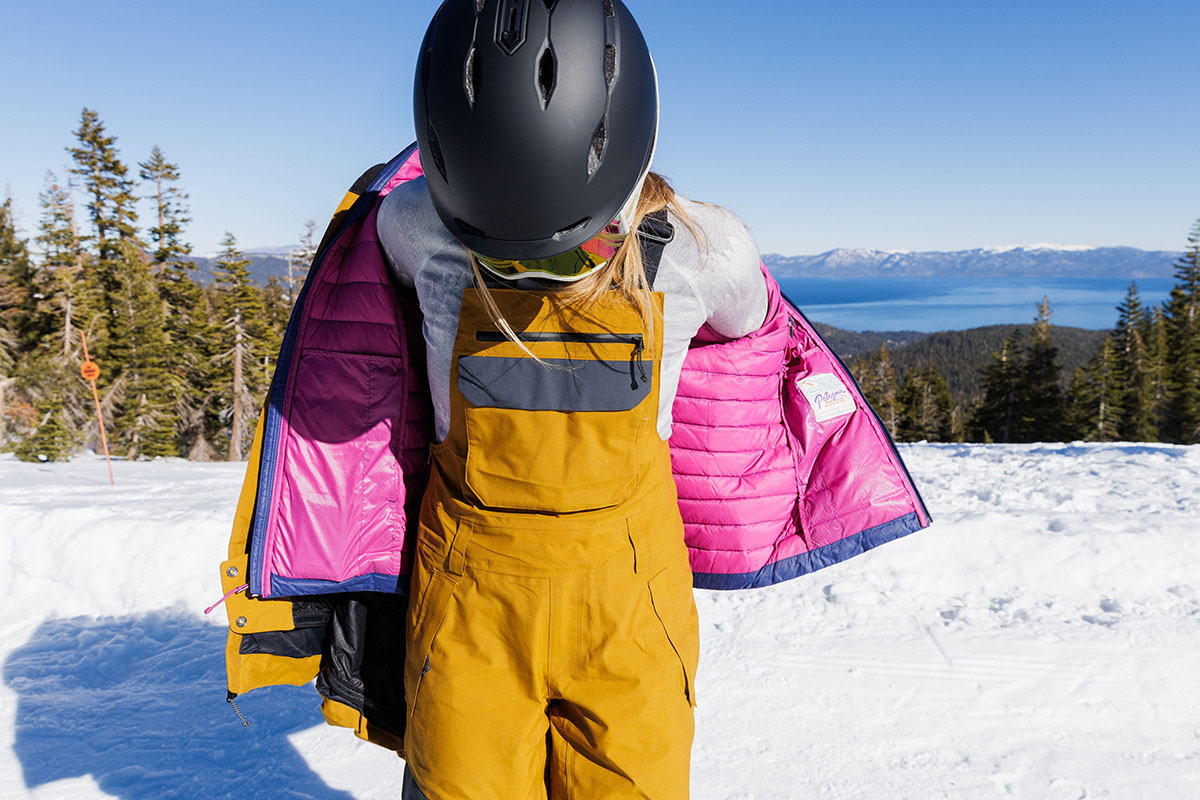
We’re excited to see the outdoor industry as a whole making notable inroads on the sustainability front, and ski jackets are no exception. In this case, the Trew Gear Astoria Jacket uses a PFAS-free construction that forgoes the use of harmful perfluorocarbons, which are also known as “forever chemicals” due to their inability to break down over time. With many states stepping up to ban PFAS, it’s a logical measure and one that many companies have begun incorporating into their clothing of late. We hope to see Trew Gear use recycled fabrics in a future update, but the Astoria nevertheless is headed in the right direction.
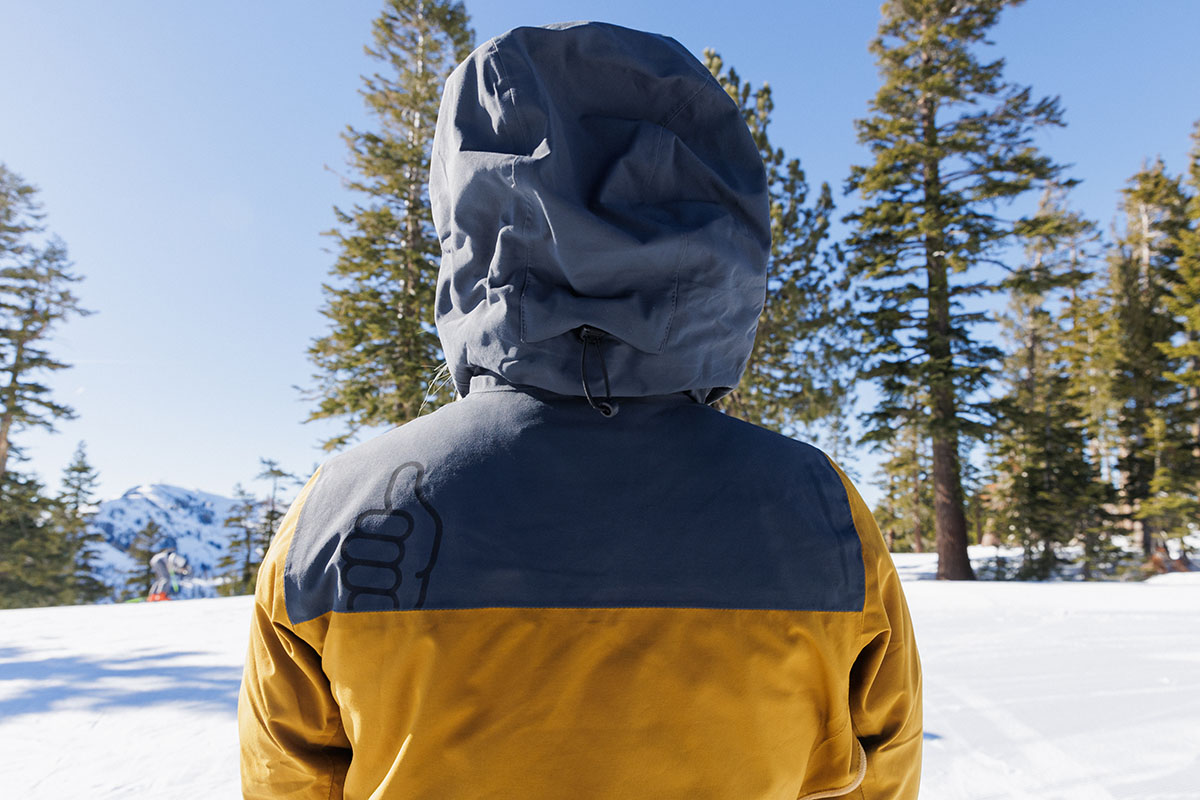
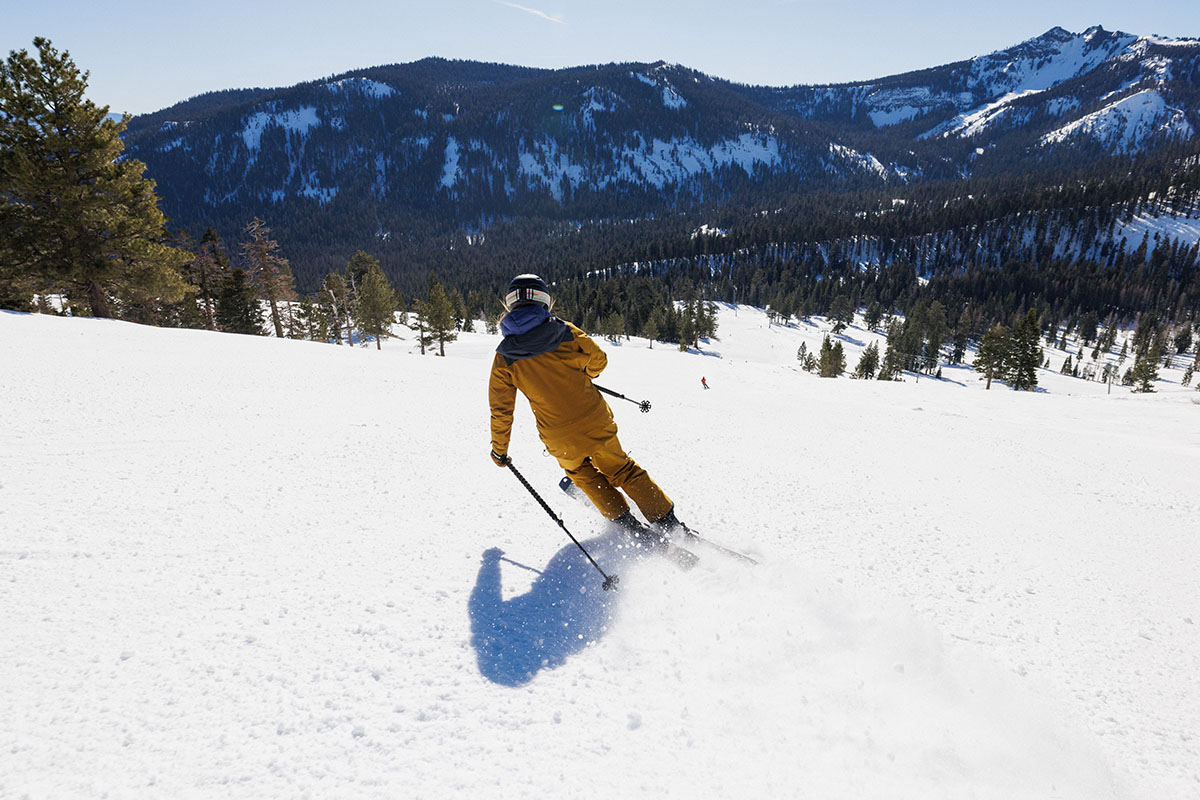
| Jacket | Price | Best For | Type | Insulation | Waterproof | Weight |
|---|---|---|---|---|---|---|
| Trew Gear Astoria | $329 | Resort | Shell | None | 2L PNW | 1 lb. 12.0 oz. |
| Trew Gear Stella Primo | $499 | Resort/backcountry | Shell | None | 3L PNW Primo | 1 lb. 13.5 oz. |
| REI First Chair GTX | $319 | Resort | Shell | None | 2L Gore-Tex | 1 lb. 8.0 oz. |
| Patagonia Storm Shift | $499 | Resort | Shell | None (fleece lining) | 2L Gore-Tex | 1 lb. 9.5 oz. |
| Flylow Gear Lucy | $400 | Backcountry/resort | Shell | None | 3L Tactic | 1 lb. 5.6 oz. |
The Astoria checks a lot of the boxes we look for in a quality resort ski jacket, but its 2-layer design has some limitations. Enter Trew’s own Stella Primo Jacket, which is a significant step up price-wise at $499 but comes with a host of upgrades. First is its 3-layer construction, which offers a boost in breathability while reducing overall bulk. As a result, it’s the better option for those who like to earn their turns on occasion. The Stella isn’t particularly light for a 3-layer shell at 1 pound 13.5 ounces, but you do get improved storage (including dual chest pockets and internal drop-in pockets), along with a healthier colorway selection (for more info, check out our in-depth Stella Primo Jacket review). In the end, it’s up to you whether or not the added investment is worth it, but skiers who ride exclusively inbounds likely won’t feel limited by the Astoria.
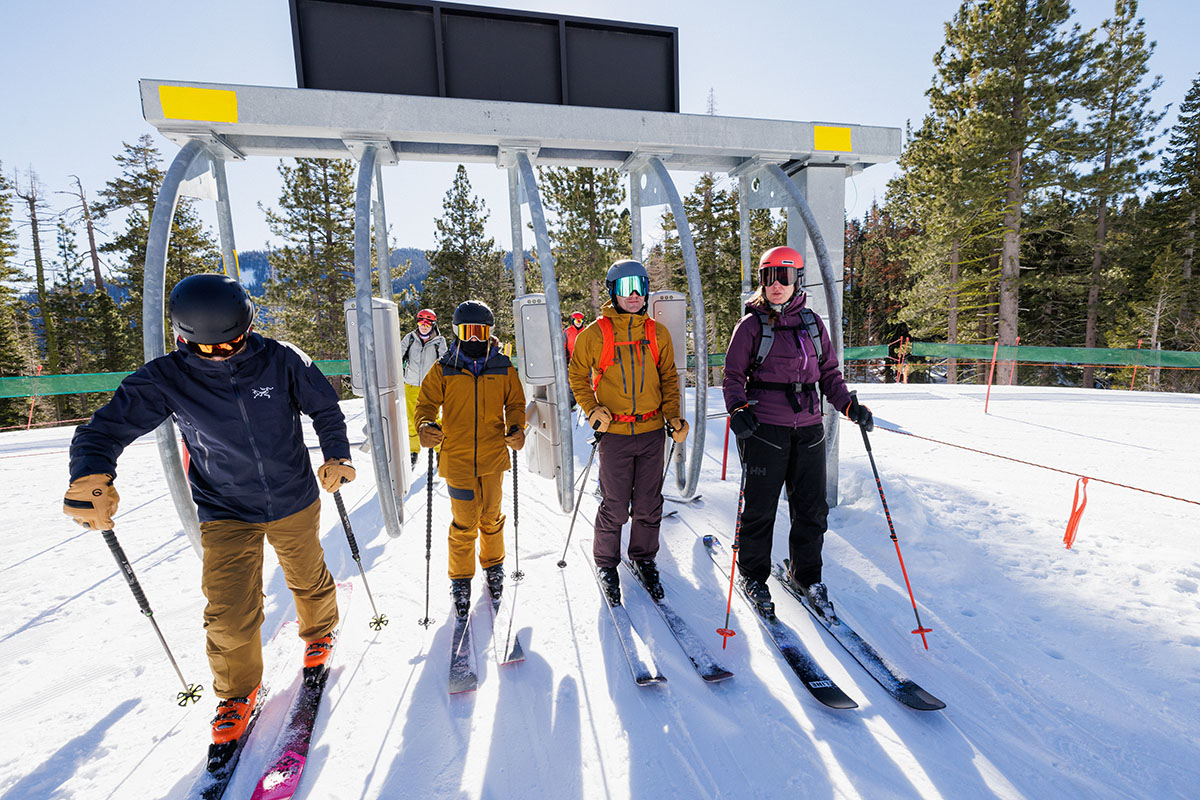
Moving back to 2-layer designs, REI Co-op’s First Chair GTX competes closely with the Astoria across the board. In addition to being a solid value at $319, the First Chair uses an upgraded Gore-Tex construction for waterproofing, along with a two-way zipper and tricot lining inside the hand pockets (both of which the Astoria lacks). Other highlights include a more competitive 1-pound-8-ounce weight, a 31-inch center back length that offers similarly great coverage, and plus sizes up to 3X. In testing, we were able to feel cold drafts through the First Chair’s shell on windy days, and it lacks the robust-confidence-inspiring feel of more expensive competitors (including the Astoria). Otherwise, the REI is a very capable alternative that handily outperforms its price tag.
Next up is Patagonia’s Storm Shift Jacket, which is another 2-layer design that offers a step up in refinement compared to the Astoria and First Chair. Right away, we’ll note that the Storm Shift is a pretty steep investment at $499, but committed resort-goers will find a lot to like. Like the First Chair, the Storm Shift features a proven Gore-Tex membrane for sealing out moisture but tacks on a cozy fleece lining for a modest dose of warmth and next-to-skin comfort. You also get a heavy-duty (150D) shell that stands up well to long-term use, a competitive weight of 1 pound 9.5 ounces, and a stronger sustainability focus thanks to the use of recycled materials and a fully PFAS-free construction. Again, the Astoria will save you some serious cash, but there’s no denying Patagonia’s keen attention to detail and top-notch fit and finish.
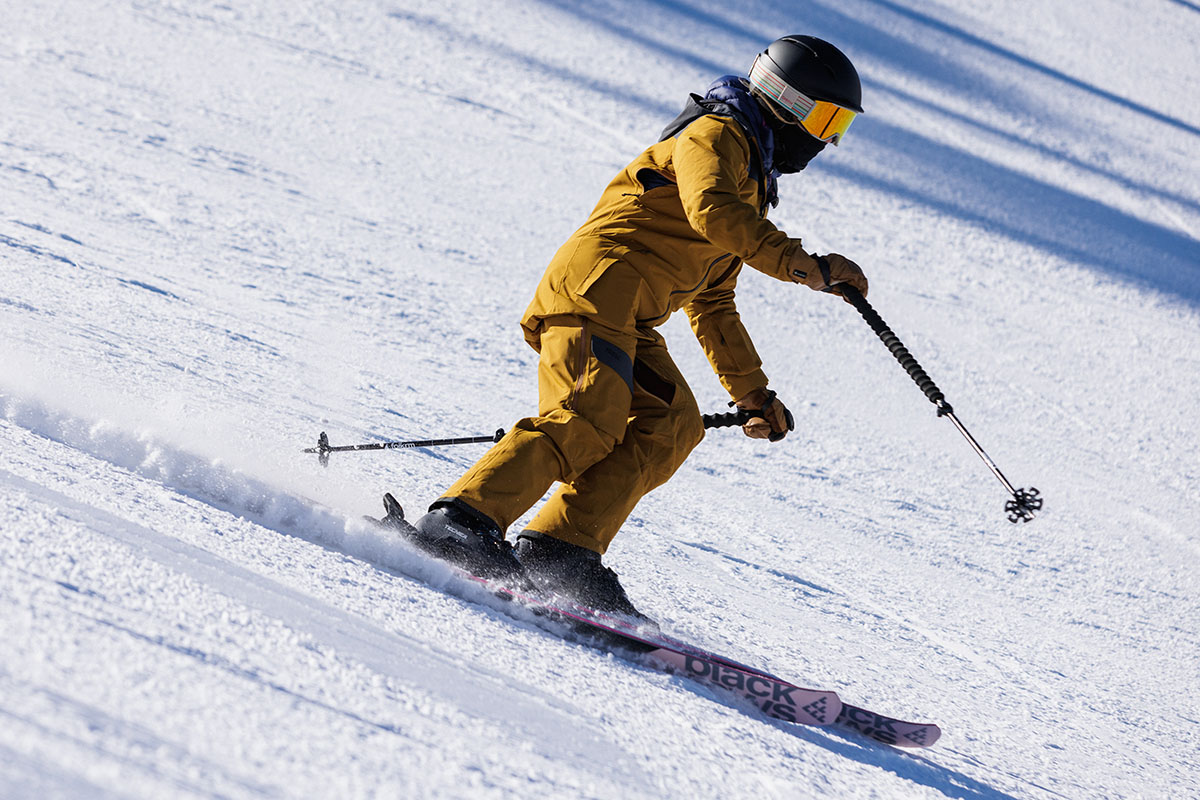
A final alternative to consider is Flylow Gear’s Lucy Jacket, which is another stylish option with a relaxed, freeride aesthetic. In parsing out the differences, the Lucy features an upgraded 3-layer construction that helps keep weight and bulk to a minimum while offering a noticeable boost in breathability. It’s also much more supple than the Trew Gear’s construction (reminiscent of a softshell), scoring very high marks in comfort. As a result, the Lucy crosses over nicely for mixed resort and backcountry use, while the Astoria is a decidedly resort-focused piece. Flylow didn’t skimp on features, either, including a helmet-compatible hood, five total pockets, a removable powder skirt, generous pit zips, and waterproof zippers. The Lucy will run you around $70 more than the Astoria, but those who like to split their time between the resort and backcountry will almost certainly find the upgrade in versatility worth the price difference.
If you’re thinking about buying gear that we’ve reviewed on Switchback Travel, you can help support us in the process. Just click on any of the seller links above, and if you make a purchase, we receive a small percentage of the transaction. The cost of the product is the same to you but this helps us continue to test and write about outdoor gear. Thanks and we appreciate your support!
Depending on the seller, most products ship free in the United States on orders of $50 or more. International shipping availability and rates vary by seller. The pricing information on this page is updated hourly but we are not responsible for inaccuracies.